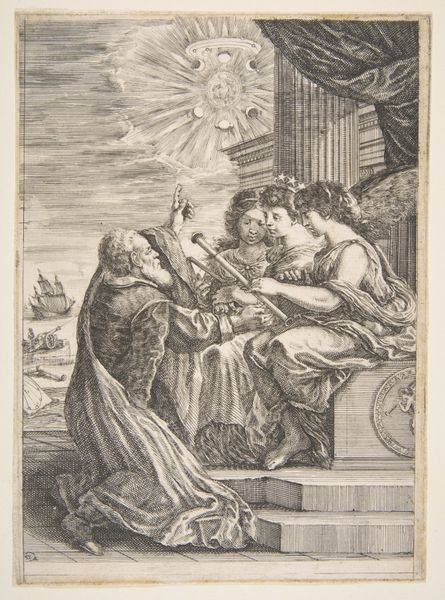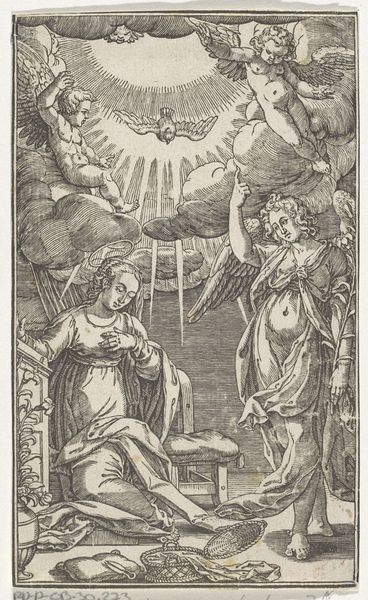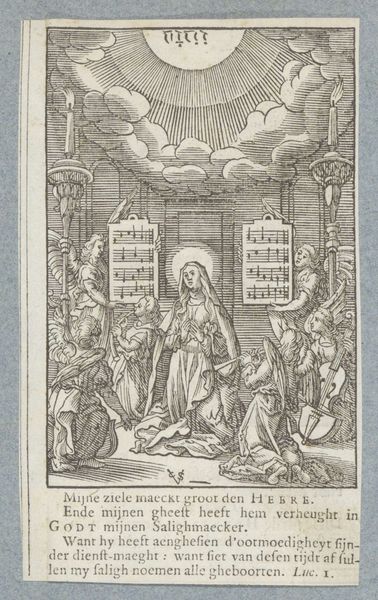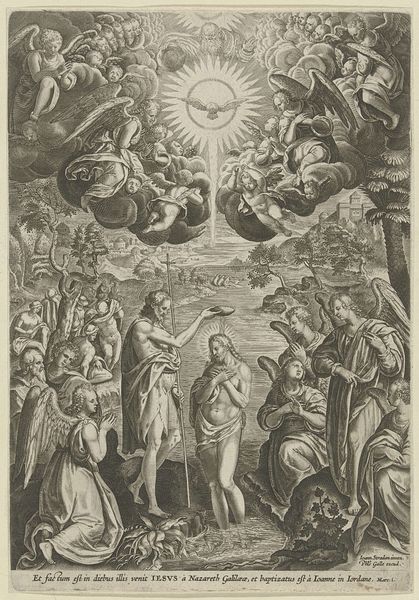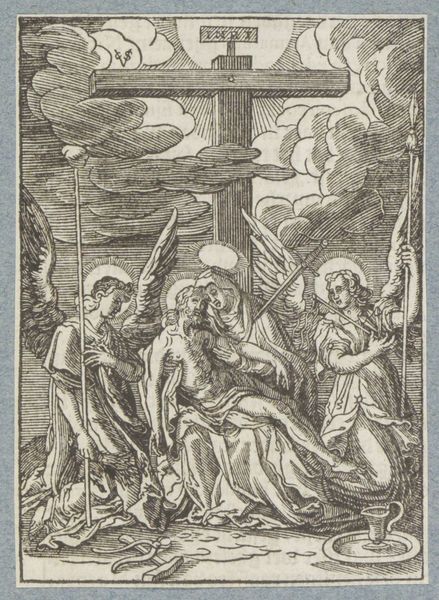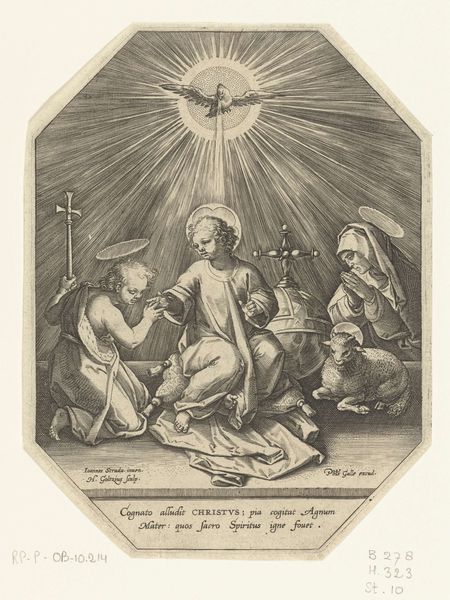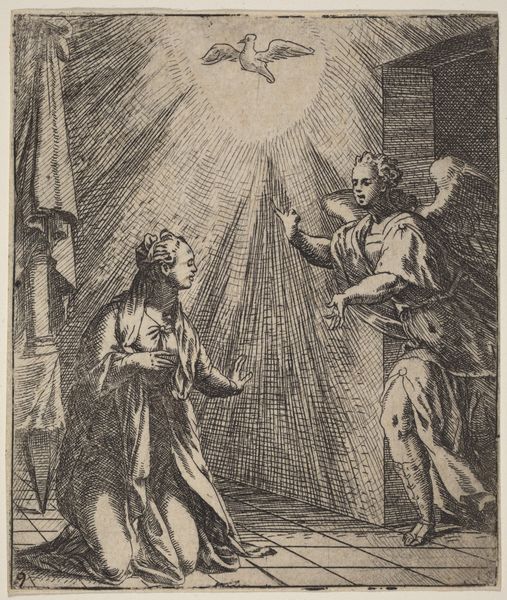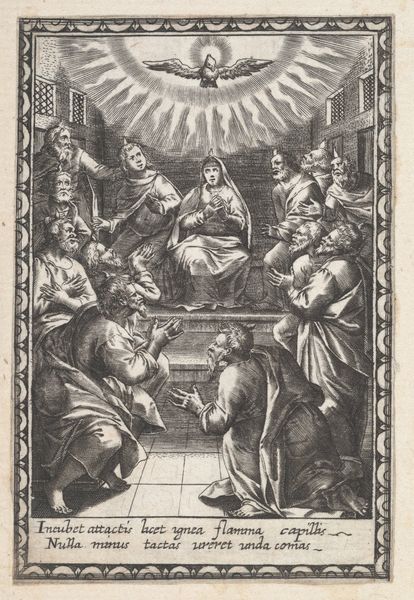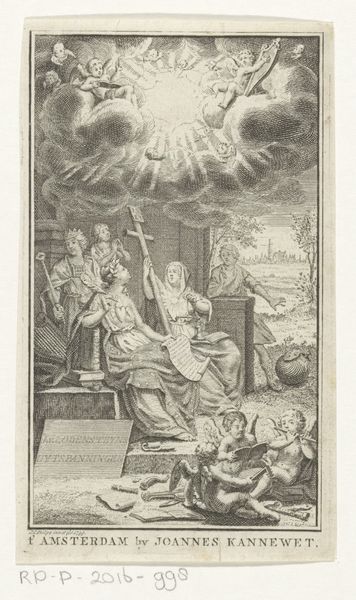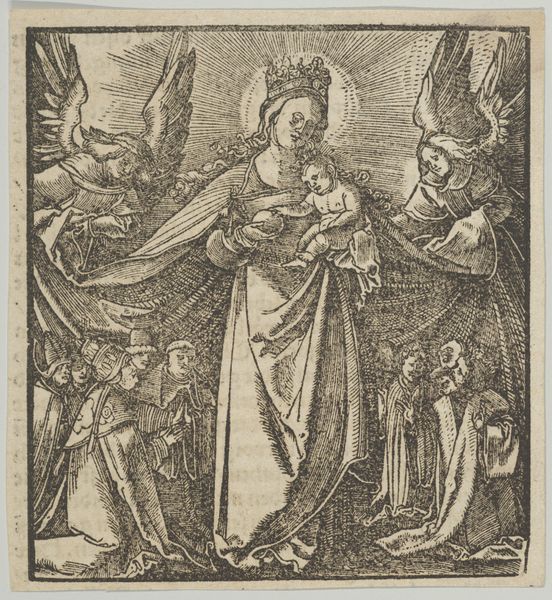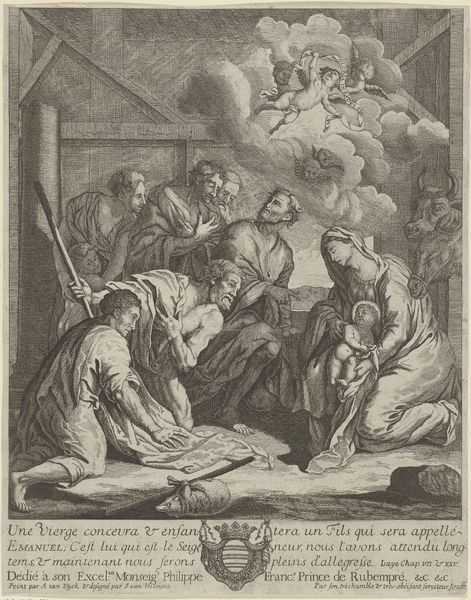
drawing, print, intaglio, engraving
#
drawing
#
baroque
# print
#
intaglio
#
figuration
#
history-painting
#
engraving
#
virgin-mary
#
angel
Dimensions: Sheet: 3 3/8 × 2 5/16 in. (8.6 × 5.8 cm)
Copyright: Public Domain
Curator: Let's explore "The Annunciation," a striking engraving now at the Metropolitan Museum of Art. Created sometime between 1590 and 1625 by an anonymous artist, this Baroque piece captures a pivotal scene. Editor: My first impression? There's such a beautiful and melancholic feel despite it depicting the angel’s visit. The details of light from the Holy Spirit and the etched lines really highlight the humbleness in this particular moment. Curator: Absolutely, and it’s crucial to look at how the print engages with social themes within its historical moment. The artist, while anonymous, presents us with Mary, but she’s no passive recipient here. Look at her pose; she almost questions, actively engaging with the divine. What readings about the roles afforded to women are embedded here? Editor: Yes, the rendering suggests an awareness of earthly life and its labors! I wonder about the specific materials employed—what inks were used, how the copper plates were etched—all speaking to the laborious processes inherent in printmaking. I also observe the small detail, a modest domestic setting for Mary's scene. The message feels geared for a certain socio-economic status. Curator: That connects to Baroque sensibilities but pushes against idealizations—what kind of audience do you believe it sought to attract? Do you feel the depiction, its lines, and the way the characters were interpreted allow for complex dialogues on spiritual consent, class structure, and expectations on purity in the era? Editor: It feels like the image makes devotion more immediate by relating sacred subject to familiar tangible form: look around, here is Mary reading by a simple desk; and there’s a book on the table, another laboriously handmade object that probably played a pivotal role to her status. It points toward a bourgeois viewer used to reading books for leisure or commercial endeavors. Curator: And by emphasizing the textures and the intimacy of domestic scenes, and also framing the supernatural using this quotidian settings it situates those ideas in contrast or connection for reflection from this group. We’re asked to contemplate what Mary’s future could look like but by looking through this sort of middle class frame, this tells us something important of who should have these ideas, dreams, even divine access and destiny. Editor: The image does seem interested in a kind of earthly pragmatism! Overall, this analysis into material components really adds nuance to our understanding. Curator: Precisely, understanding art involves appreciating its context within historical and modern cultural conversations, revealing complexities. Editor: And appreciating material origins reveals the artistic project within production and even access of images such as these!
Comments
No comments
Be the first to comment and join the conversation on the ultimate creative platform.
